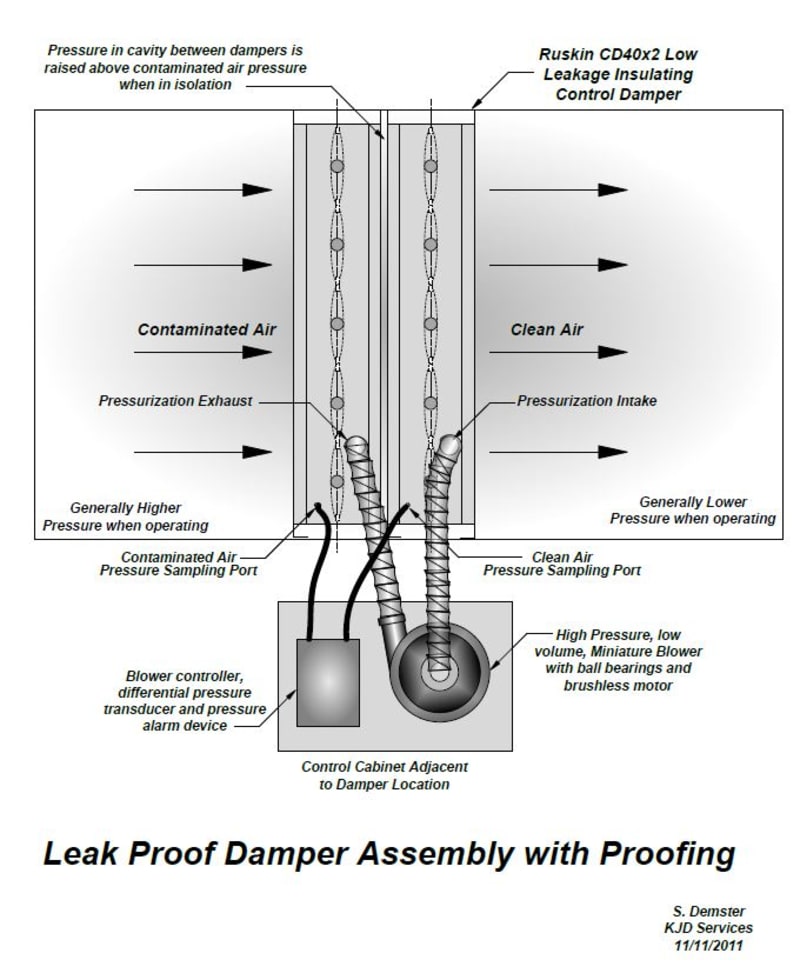
There are many situations that require an absolute leak-proof seal of an air duct in a building. Pharmaceutical processing, laboratory research, manufacturing explosives, medical isolation, nuclear reactors, and many more applications exist.
However, today there is no absolutely leak-proof damper. All dampers leak a small amount. Furthermore, these dampers are installed in areas that limit or prohibit observation. A critical damper can malfunction, wear or fail with the result being great harm.
This invention consists of a recently patented damper that is the first truly leak-proof damper as verified by extensive testing. It also includes an integrated monitoring of the damper performance that can remotely indicate the condition of the damper. A failing or failed damper is reported to the operator. This process is called "automatic proofing." It provides a real time, continuous reporting of the damper function.
This damper can make it possible to enhance the safety and protection of working with dangerous air borne materials. For example, a scientist now can work with a dangerous chemical or biological process with assurance an accident can be contained.
As shown in the sketch, this damper can be constructed from readily available materials that are common in the trade today. The sketch shows the description of an actual damper assembly that was used for testing. Conventional low leakage dampers are fitted with a pressurization blower and a differential pressure monitor. When the damper is placed in the isolation mode the two dampers close tightly and the blower pressurizes the cavity between them. The controls monitor the pressure in the cavity and compare it to the "dirty" air side pressure. As long as pressure in the cavity is above the dirty side, there can be no leakage.
The differential pressure reading provides the proofing function. A small leak in a damper will reduce the pressure but the blower will cause air drawn from the clean side to leak out to the dirty side rather than have dirty air leak into the clean side. A larger leak may cause a loss in pressure and the system can then alarm. However, the objective is to detect leakage before it becomes critical.
From a cost perspective, this damper is relatively low cost for the level of protection it provides. It consumes a very small amount of energy with the blower operating only when the damper is placed in the isolation mode.
It can be used to replace existing dampers in ducts today and it is easy to repair. It contains no exotic or rare materials and should have an operational life that is equal to conventional dampers.
-
Awards
-
 2012 Top 100 Entries
2012 Top 100 Entries
Like this entry?
-
About the Entrant
- Name:Stanley Demster
- Type of entry:individual
- Software used for this entry:Visio, LabView
- Patent status:patented

